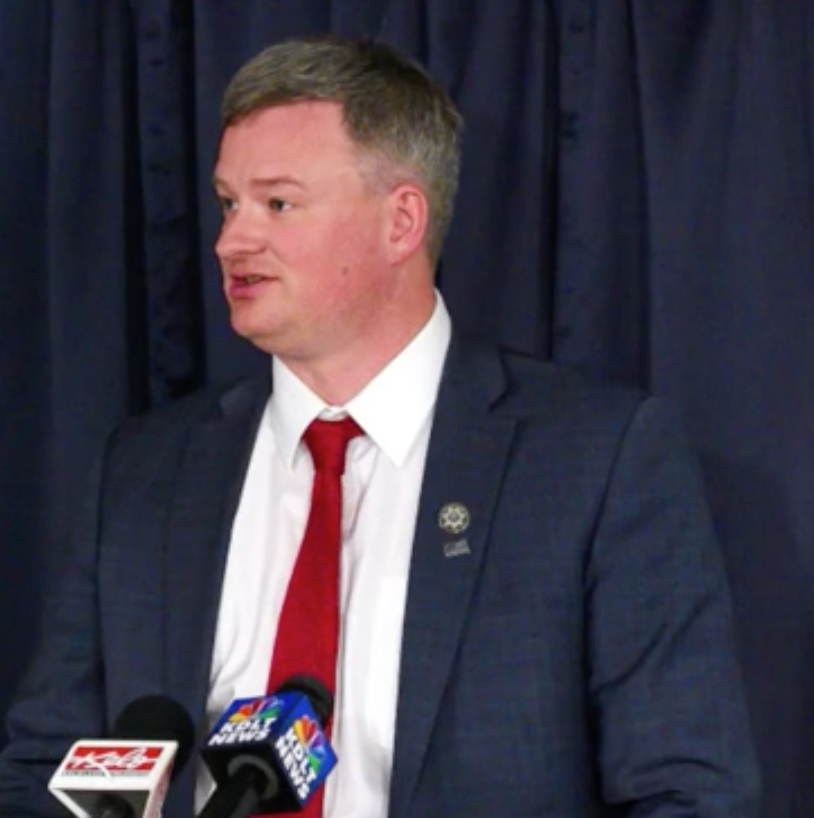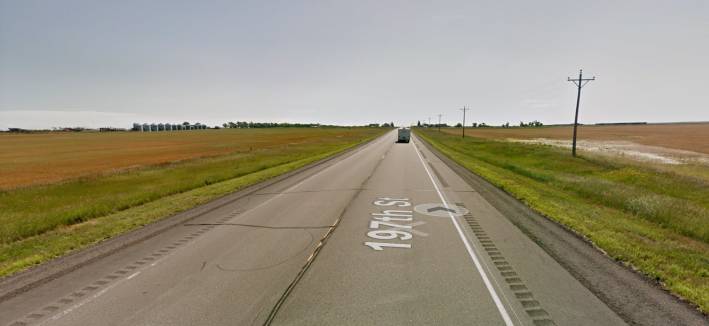Why the S.D. Attorney General Will Probably Get Away With Killing A Pedestrian
4:45 PM EDT on September 15, 2020

Jason Ravnsborg. Source: Argus Leader Video.
One of South Dakota's most powerful elected officials killed a pedestrian in a bizarre rural car crash on Saturday evening, but his victim's body wasn't found until the driver personally returned to the scene the following morning — an event that's raising questions among street safety advocates about the capacity for corruption in policing, the unique dangers of rural road design, and why elected officials still use the term "accident" to describe traffic violence that is always preventable.

On his way home from a party where he claims not to have been drinking, South Dakota Attorney General Jason Ravnsborg struck and killed pedestrian Joe Boever at 10:30 p.m. on a dark stretch of rural highway near Highmore, population 790. Relatives speculate that Boever was attempting to retrieve his pick-up truck, which he had been forced to abandon after he crashed in a nearby ditch earlier in the day.
In a statement, Ravnsborg said he believed Boever "to be a large animal (likely a deer)" when he struck the 55 year-old man, raising serious questions among the victim's family about whether the attorney general was distracted at the time of the crash. Ravnsborg has a history of dangerous driving, receiving six citations for speeding between 2014 and when he was elected to statewide office in 2018.
“A deer doesn’t look like a human,” the victim's cousin, Victor Nemec, told the Rapid City Journal.
Following the crash, the attorney general reportedly stopped his vehicle and called the local sheriff, Mike Volek, with whom he performed a cursory search of the scene with cell phone flashlights. Both men failed to find Boever, and within 40 minutes, Ravnsborg was back on the road in a car he had borrowed from Volek, who offered the official his personal vehicle so the AG would not have to wait for a tow truck. The sheriff apparently conducted no further investigation and went home as well.
At eight o'clock the next morning, Ravnsborg and his chief of staff returned to Highmore to return the sheriff's car, and decided to stop at the scene of the crash to search for the "animal" again.
That's when they discovered Boever, who had been lying near the roadside for over 10 hours.
Reaction from street safety advocates was swift, with some condemning Ravnsborg for his callous depiction of the crash, which he called an "accident" in his official statement.
"Attorney General Ravnsborg's use of the word 'accident" in the case of this fatal crash he was involved in is inappropriate in several ways," said Leah Shahum, director of the National Vision Zero Network. "First, given his position as the state's highest-ranking legal officer, he should not be biasing the investigation or future legal findings. Second, it's hurtful to the victim's loved ones to be dismissing this as an 'oops' situation. And, finally, [it] feeds into the pervasive cultural myth that misrepresents the actual agency we have in preventing serious crashes —because we can, indeed, influence many factors, such as safe street lighting, speed limits, road design, ensuring sidewalks, and more.
"The Attorney General should understand that words matter," she added.
Highway 14 is a flat, two-lane rural highway with no pedestrian infrastructure or streetlights. Officials have not released the precise location of the crash, but the victim's family, who are residents of the town, told local reporters that only a small stretch of the road runs through their small community, and carries speed limits of 45 to 65 miles per hour throughout. Even at the lower bound of that range, a pedestrian struck by a car has less than a 50 percent chance of survival.

The design of such a road is certainly not an anomaly in rural communities, which partly explains why such areas are often so deadly for walkers.
About 25 percent of collisions between drivers and non-drivers occur along rural highways, according to the Federal Highway Administration, despite the fact that just 19 percent of Americans live in rural areas. And because cars on rural highways travel so fast, crashes are far more likely to be fatal.
A stunning 57 percent of driver/walker crashes in the countryside occur on roads with speed limits over 50 miles per hour, compared to just 11 percent in cities. Not surprisingly, 18 percent of pedestrians die from their injuries when they're struck on rural roads; on slower city streets, just 10 percent do.
The unique nature of rural policing and rural transportation culture may also have played a role in the crash that killed Boever. Several commenters on Twitter noted that striking a "deer" on an unlit country road is considered a common and even inherent risk of driving in a farmland community, and that drivers are often instructed not to stop to attend to a wounded "animal" if they suspect they may be rear-ended by another driver on a dark, narrow road.
Others noted that it is not necessarily unusual for an under-resourced small-town police department to provide a broad range of courtesies to residents that might seem bizarre in bigger cities, like loaning a personal vehicle to a stranded traveler. Rural communities often experience longer emergency response times, too, though Volek seemingly responded to Ravnsborg's request promptly.
But other advocates were suspicious that both Volek and Ravensburg failed to locate the body of Boever on the flat country road, not to mention that the sheriff functionally aided the AG in leaving the scene of his crime. And even if no corruption occurred, some think the men had a moral obligation — if not, in our broken transportation culture, a legal one — to do more to save Boever's life.
"As drivers, it is our responsibility to do everything we can to save a life when we strike someone with our cars — and our elected officials take an additional oath of responsibility to the public," said Tiffanie Stanfield of the non-profit Fighting Hit and Run Driving. "From the sheriff to the attorney general, there are so many people who took no responsibility in this case, who didn’t think about that victim’s family. Where's the compassion?"
Since Ravnsborg's crime may not technically qualify as a hit-and-run crash, advocates are skeptical that he will face real legal accountability. Even if he were somehow charged with fleeing the scene of a crash, the penalties for that crime in South Dakota can carry fines as little as $2,000. He could also be charged with failure to exercise due care, the low-hanging fruit of traffic violations, but one that is applicable in almost every crash.
Until the collision is investigated, activists hope the death of Joe Boever might at least serve as a cautionary tale for other drivers.
"When we’re driving down rural roads that don’t have sidewalks, that have no lights, it's not an excuse," said Stanfield. "It means we have to be more aware — not less."
Jason Ravnsborg declined to comment for this story.
Kea Wilson has more than a dozen years experience as a writer telling emotional, urgent and actionable stories that motivate average Americans to get involved in making their cities better places. She is also a novelist, cyclist, and affordable housing advocate. She previously worked at Strong Towns, and currently lives in St. Louis, MO. Kea can be reached at kea@streetsblog.org or on Twitter @streetsblogkea. Please reach out to her with tips and submissions.
Read More:
Stay in touch
Sign up for our free newsletter
More from Streetsblog USA
Tuesday’s Headlines Pick the Low-Hanging Fruit
Greg Shill argues that if a transformative road redesign isn't possible, it's time to talk about second-best strategies.
How to Fight a Texas-Sized Freeway Battle
A new book explores how Texas advocates are fighting back against destructive highway expansions. But what happened to those projects since it was sent to the printer?
S.F. Fire Apologies for Tweeting About Imaginary Bike Rule
There is no rule in California that says cyclists have to ride single file — but the San Francisco Fire Department tweeted about it anyway.
You Wouldn’t Like Monday’s Headlines When They’re Angry
Which state has the worst road rage? Consumer Affairs magazine looked at a variety of factors to come up with an answer.
When it Comes to Federal Infrastructure Grants, Size Does Matter
Cities and municipalities with larger budgets and staff are more likely to win competitive federal infrastructure grants, the Urban Institute has found.




